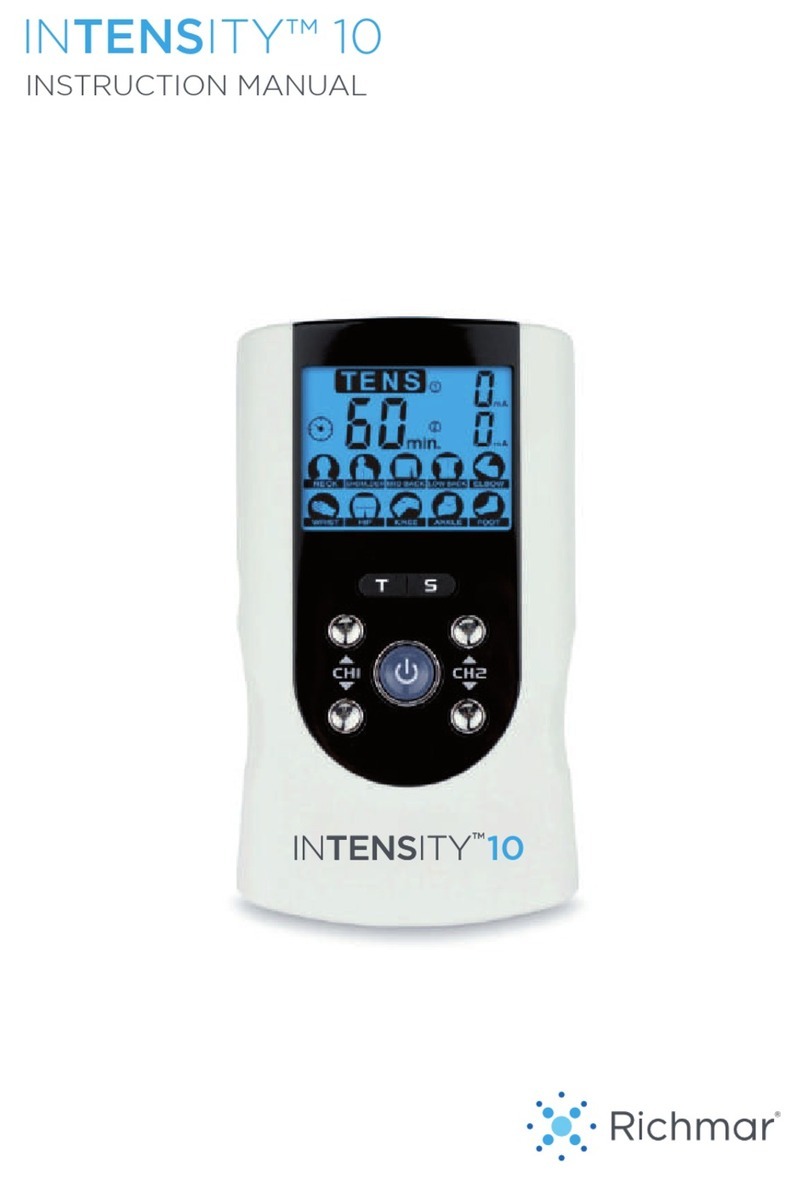
8
16. NEVER use on the areas of the skin which lack normal sensation.
17. Apply the electrodes to clean, dry, and unbroken skin only.
18. Keep electrodes separate during treatment, electrodes in contact
with each other could result in improper stimulation or skin burns.
19. Keep the stimulator out of reach of children.
20. Consult your doctor if you have any questions or concerns before
using this device.
CAUTIONS:
1. Federal law (USA) restricts this device to sale by or on the order of
a physician.
2. This device is for single patient use only.
3. Keep yourself informed of the contraindications.
4. This device is not intended for use on an unattended patient who is
non-compliant, emotionally disturbed, has dementia, or low IQ.
5. Read, understand, and practice the warnings, cautions and operating
instructions. Know the limitations and hazards associated with using
this device. Observe the cautionary and operational decals placed
on the unit. Always follow the operating instructions prescribed by
your healthcare practitioner.
6. The instruction of use was listed; any improper use may be dangerous.
7. Do no use this device for undiagnosed pain syndromes until
consulting a physician.
8. Patients with an implanted electronic device, such as a cardiac
pacemaker, implanted defibrillator, or any other metallic or electronic
device should not use this device without first consulting a doctor.
9. Stimulation delivered by this device may be sucient to cause
electrocution. Electrical current of this magnitude must not flow through
the thorax or across the chest because it may cause cardiac arrhythmia.
10. DO NOT place electrodes on the front of the throat as Laryngeal and
Pharyngeal muscle spasms may occur. Stimulation over the carotid
sinus (neck region) may close the airways, make breathing dicult,
and may have adverse eects on the heart rhythm or blood pressure.
11. DO NOT place electrodes on your head or at any sites that may
cause the electrical current to flow transcerebrally (through the head).
12.
Patients with heart disease, epilepsy, cancer or any other health
condition should not use this device without first consulting a physician.
13. Some patients may experience skin irritation or hypersensitivity
due to the electrical stimulation or silicone rubber. If rash develops
or pain persists, discontinue use and consult a doctor.
14. Electrode placement and stimulation settings should be based on
the guidance of prescribing practitioner.




























